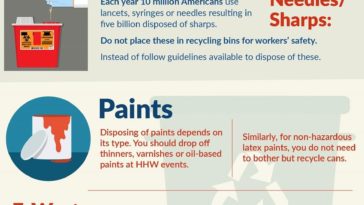Practical Guidance For Waste Control While Remodeling Your Home
Practical Guidance For Waste Control While Remodeling Your Home
Blog Article
Content Develop By-Solomon Dunn
When embarking on a home renovation, waste monitoring might not be the first thing on your mind, however it's a critical aspect of the process. By executing a couple of basic strategies, you can considerably lower the ecological influence of your project. From wise decluttering strategies to innovative recycling options, these quick ideas will not just improve the effectiveness of your remodelling but also add to a much more sustainable outcome.
Pre-Renovation Decluttering
Prior to diving into your home renovation project, decluttering your room is an important action to ensure a smoother and extra well organized procedure. Begin by evaluating each room and determining what things are necessary and what can be disposed of or donated. Be ruthless in your decluttering efforts; if you have not utilized a product in over a year, it might be time to let it go.
Kind things into classifications such as maintain, contribute, recycle, or throw out. Purchase storage space solutions like containers or racks to help organize the products you choose to maintain. This will not just declutter your area but also make it much easier to find things throughout and after the remodelling.
Decluttering prior to the restoration will not just improve the procedure but additionally save you time and money. You'll have a clearer vision of what needs to be done and will not be overwhelmed by unnecessary items.
Once you have actually decluttered, you can progress with your renovation task with a fresh and organized space.
Reliable Waste Sorting
To make sure a smooth and ecologically aware home renovation procedure, efficient waste sorting is critical. As you begin your remodelling task, established assigned sorting areas for various kinds of waste.
Positioning different containers or containers for recyclables, unsafe materials, and general waste will streamline the disposal process and make it simpler to divert recyclable materials from winding up in land fills.
Tag each sorting area clearly to prevent confusion and ensure that everybody involved in the restoration understands where each type of waste should go. This easy step can aid prevent mixing of products that might contaminate recyclables or produce safety and security dangers throughout disposal.
Recycling and Upcycling Approaches
Reliable waste sorting sets the foundation for a successful home remodelling task. When it concerns managing waste throughout your remodelling, reusing and upcycling methods play a crucial function in lowering landfill waste and maximizing the possibility of your products.
Beginning by marking over here for various types of recyclables like glass, plastic, and paper. Check with your local recycling facilities to ensure you're complying with the correct standards for disposal.
Think about upcycling things like old furnishings, doors, or cupboards instead of tossing them away. With a fresh layer of paint or some innovative changes, you can give these things a new life in your restored area. Upcycling not just lowers waste yet likewise includes an unique touch to your home style.
Look for donation centers or companies that accept multiple-use structure products. By giving away products like lights, cupboards, or ceramic tiles, you can aid others while decluttering your space. Remember, please click the next website in recycling and upcycling can go a long way in making your home remodelling job extra sustainable and environmentally friendly.
Conclusion
To conclude, by complying with the quick ideas for managing waste during a home restoration, you can make the procedure more reliable and eco-friendly. Decluttering prior to starting the remodelling, sorting waste right into assigned bins, and thinking about recycling or upcycling choices can assist decrease the quantity of waste going to garbage dumps. With a little extra effort, you can make a large influence on the sustainability of your project.
